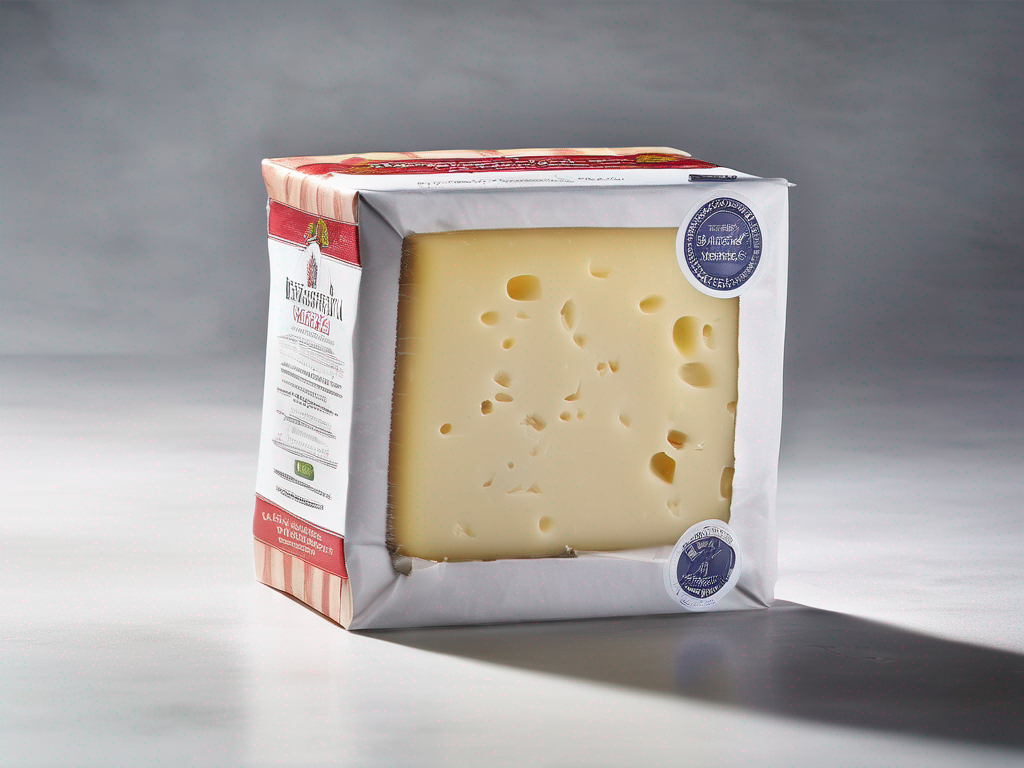
How to Store Gloucester Cheese Sold in Wrapped Block Unopened
Get Your Free Food Safety Cheat Sheet
30 most common foods with instant answers. Print it and stick it on your fridge—completely free!
How to Store Gloucester Cheese Sold in Wrapped Block Unopened
When it comes to preserving the freshness and flavor of Gloucester cheese sold in a wrapped block, proper storage is crucial. Whether you have purchased this delectable cheese for immediate consumption or plan to keep it for future use, following the right storage techniques can help prevent spoilage and ensure that the cheese maintains its quality. In this blog post, we will explore the best practices for storing Gloucester cheese sold in wrapped blocks unopened. (Gloucester cheese sold in wrapped block unopened)
Understanding Gloucester Cheese
Before we delve into the storage guidelines, let's take a moment to appreciate the unique characteristics of Gloucester cheese. This semi-hard cheese originated in Gloucestershire, England, and is known for its rich, creamy texture and distinctive flavor profile. Made from cow's milk, Gloucester cheese comes in two varieties: Single Gloucester and Double Gloucester. Single Gloucester is a milder cheese, while Double Gloucester has a more pronounced flavor.
Importance of Proper Storage
Proper storage is essential for maintaining the quality and safety of Gloucester cheese. When stored incorrectly, cheese can spoil quickly, leading to flavor deterioration and potential health risks. By following the recommended storage practices, you can prolong the shelf life of Gloucester cheese and enjoy it at its peak freshness.
Tips for Storing Unopened Gloucester Cheese Sold in Wrapped Blocks
Here are some practical tips for storing unopened Gloucester cheese sold in wrapped blocks to prevent spoilage:
-
Temperature Control:
- Store the cheese in the refrigerator at a temperature of around 35 to 45°F (1.6 to 7.2°C).
- Avoid storing the cheese in the freezer, as it can affect the texture and flavor.
-
Packaging:
- Keep the cheese in its original wrapping to protect it from moisture and odors.
- If the original wrapping is damaged, rewrap the cheese tightly in wax paper or plastic wrap.
-
Location:
- Store the cheese in the dairy compartment or designated cheese drawer of the refrigerator.
- Keep the cheese away from strong-smelling foods to prevent flavor absorption.
-
Air Exposure:
- Limit the cheese's exposure to air by sealing it properly.
- Consider using airtight containers or cheese storage bags for added protection.
-
Rotation:
- Practice the "first in, first out" rule to ensure that older cheese is used before newer purchases.
- Check the expiration date on the packaging and prioritize consuming cheese that is nearing its expiration.
Signs of Spoilage
To determine if Gloucester cheese has spoiled, look out for the following signs:
- Mold growth beyond surface mold that can be trimmed.
- Slimy or discolored patches on the cheese.
- Unpleasant odor, indicating bacterial growth.
If you notice any of these signs, it is best to discard the cheese to avoid potential foodborne illnesses.
Conclusion
Proper storage is key to preserving the quality and flavor of Gloucester cheese sold in wrapped blocks. By following the guidelines outlined in this blog post, you can ensure that your cheese remains fresh and safe for consumption. Remember to maintain the right temperature, packaging, and storage location to extend the shelf life of your Gloucester cheese. Enjoy this delectable cheese with confidence, knowing that it has been stored correctly to maintain its exceptional taste. [Learn more about Gloucester cheese sold in wrapped blocks unopened](/food/gloucester cheese sold in wrapped block unopened) and savor every bite without worrying about spoilage. (Gloucester cheese sold in wrapped block unopened)
Authoritative Food Safety References
These agencies and university labs inform every tip and health precaution we publish.
USDA FoodKeeper – Cold Storage Guidelines
Official refrigerator, freezer, and pantry timelines maintained by the U.S. Department of Agriculture.
Visit USDA FoodKeeperFDA Produce Safety Rule & Grower Guidance
Field-to-fridge handling practices that prevent contamination of fruits, vegetables, and leafy greens.
Visit FDA Produce SafetyCDC Foodborne Illness Prevention Hub
Surveillance-backed guidance on pathogens, symptoms, and steps to reduce foodborne illness risk.
Visit CDC Food SafetyUC Davis Postharvest Technology Center
University research detailing optimal storage atmospheres for produce after harvest.
Visit UC Davis PostharvestPenn State Extension – Home Food Preservation & Safety
Peer-reviewed extension bulletins on safe canning, chilling, and reheating practices.
Visit Penn State ExtensionGet Your Free Food Safety Cheat Sheet
30 most common foods with instant answers. Print it and stick it on your fridge—completely free! Want more? Upgrade to the complete guide with 70+ foods.
Scan your food directly and get instant safety info using our AI-powered camera feature.